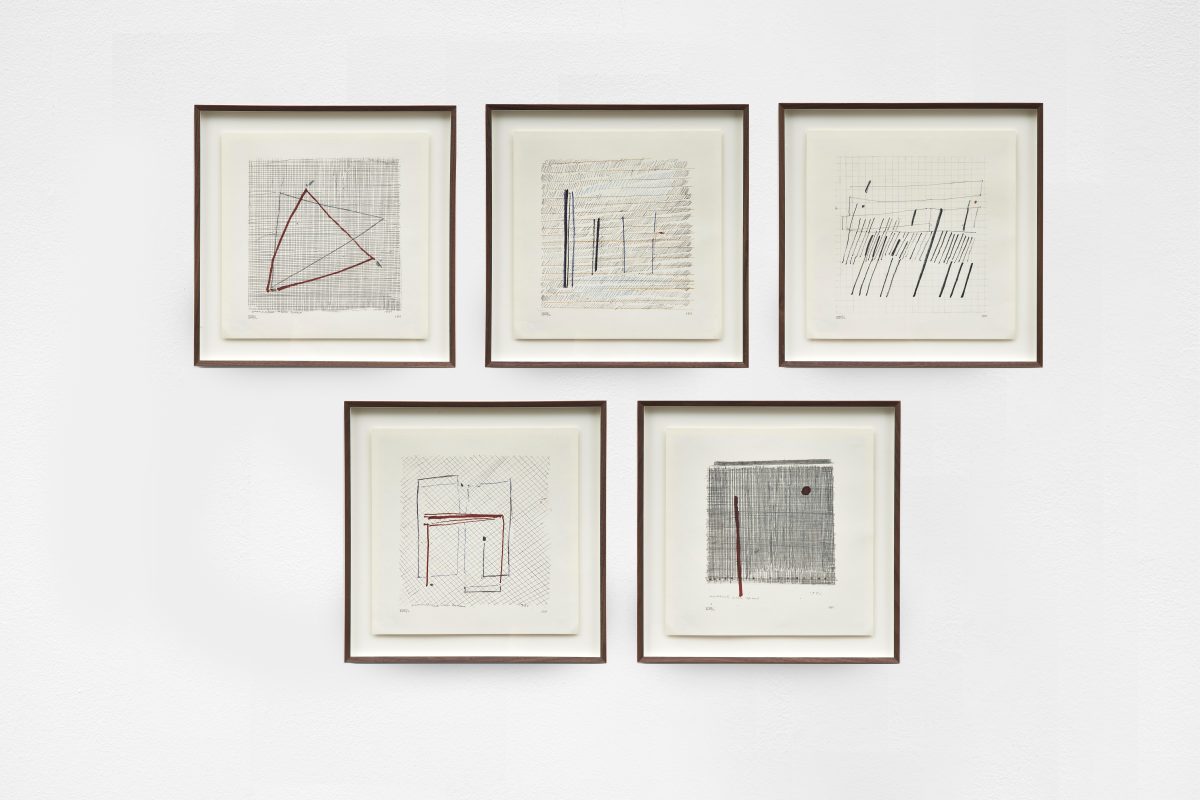
- This event has passed.
kaufmann repetto is delighted to present The Mark & The Measure, the gallery’s first solo presentation of the late Italian modernist, Bice Lazzari (1900-1981). Often described as the “Agnes Martin of Italy,” Lazzari was relatively obscure to the international art world during her lifetime, despite her groundbreaking contributions to the history of modernist abstraction. Organized in collaboration with Richard Saltoun Gallery, this exhibition focuses on the evolution of Lazzari’s pioneering practice within the last four decades of her career and her contributions to abstraction and minimalism.
Born in 1900 in Venice, Bice Lazzari came from a family of merchants and architects. She first studied violin and piano as a young girl at the Conservatory before enrolling in courses in 1916 at the Academy of Fine Arts, where she studied life drawing and decorative art. Despite her interest in formal painting, academic training was not offered to women at the time due to the subject’s required anatomy classes with nude models. Her earliest influences were that of en plein air painting, figurative impressionism and later, geometric abstraction. After her father’s death in 1928, the introverted artist gave up figurative painting to pursue work as a designer, one of the few acceptable professions for a young woman at the time. Her experience in the applied arts – textiles, decorative panels, etc. – provided her with the opportunity to study and experiment with abstract and geometric designs, thus planting the seeds for her future compositional language.
In 1935, Lazzari moved to Rome, where she would live and work for the rest of her life. She supported herself by collaborating on projects with architects and designers such as Carlo Scarpa (her brother-in-law), Ernesto Lapadula, and Gio Ponti. Lazzari had no formal training in abstraction, and like her compatriots, she was culturally isolated from the outside world due to Italy’s political state during the interwar years. It was not until after the end of the war when she was able to return and devote herself to painting, embracing geometric abstraction and informalism.
Lazzari dedicated herself to abstract geometric painting in the 1950s, continuously inventing forms marked with emotion. She mainly experimented in painting fractured shapes and lines against uneven blocks of vivid colors – as seen in Picture in Red (1953) – until 1957. In subsequent works on view, like Night Writing (1958) and Collage No. 1 (1959), the artist adopts a more painterly approach as her sweeping brushstrokes transformed into fervent and chaotic gestures. Although Lazzari never joined any principal groups or movements during her career, many of her dense abstractions from this period are considered important examples of informalism’s “matter painting.”
The following decade, the Italian artist “suffered a severe identity crisis” in 1964. Her interest in the informal dissipated and she was forced to abandon her traditional materials and palette in order to develop a more simplified form of expression. Made with tempera, glue and sand, Sequences 3 (1964) marks a new stage in Lazzari’s career as she shifts away from the traditional medium of oil and starts developing a pictorial language of rhythmic marks and lines. For Bice, everything was “rhythm and obsession.” In Untitled (1967), Lazzari rigorously renders an elusive universe of dense lines that subtly vibrate in communion despite the bolts of white and red that seamlessly break the composition into three parts. A new world of abstraction begins to take shape, one in which revolves around color, sign and rhythm, or what she believed were the essential elements of any composition.
Lazzari was one of the twentieth century’s most innovative artists, and like other women artists working at this time, she worked defiantly to create her own visual language. The ‘60s and the ‘70s signal the culmination of the artist’s signature style, one in which seemingly simple colors and marks are used to create linear rhythms and lyrical dialogues, making her works come alive as visual symphonies. Turning to acrylic paint in the final decade of her practice, Lazzari’s abstract style became more minimal and hard-edge. Her visual vocabulary was reduced to groupings of straight lines against a monochromatic foundation of color, usually white, cream, black or red. Her love of music and poetry easily translated to the canvas as seen in Sequence of the Sign (1973), which presents a poetic dialogue of lines, drawn freely by hand, gently pulsing against a vast space of solid cream. An ardent writer, she described her goal as a painter: “Everything that moves in space is measurement and poetry. Painting searches in signs and color for the rhythm of these two forces, aiding and noting their fusion.”1
Although success arrived late for the Italian pioneer, Lazzari remained uncompromisingly dedicated to pursuing a career as an artist in a world dominated by male protagonists. Almost blind at the end of her life, she continued to work up until her death on November 13, 1981, in Rome. Her work had been widely shown throughout Italy by the time she died. She was included in the 19th and the 25th Venice Biennales; she won one of the five prizes given for her work, Vanity, displayed at the Venice Pavilion in 1950. While her first solo exhibition in the United States was held in 2013 at the National Museum of Women in the Arts (NMWA), Washington, D.C., Lazzari has been the subject of exhibitions at the Galleria Internazionale d’Arte Moderna, Ca’ Pesaro, Venice (2022); The Estorick Collection, London, UK (2019); The Phillips Collection, Washington, D.C. (2018); Museo del Novecento, Florence (2019); S | 2 Gallery, London, (2018); Museo Macro, Rome (2011); The Peggy Guggenheim Collection, Venice (2011); and the Museo del Corso, Rome (2002), among others. She was recently included in the acclaimed international group exhibition, Women in Abstraction. Another History of Abstraction in the 20th Century, at the Centre Pompidou, Paris and the Guggenheim Bilbao, Bilbao (2021-2022). Lazzari’s work is featured in numerous private collections, as well as in the National Museum of Women in the Arts (NMWA), Washington, D.C.; The Phillips Collection, Washington, D.C.; Peggy Guggenheim Collection, Venice; Museo del Novecento, Milan; Museo Nazionale, Pisa; Museo Novecento, Florence; and Musei Vaticani, Rome.
Bice Lazzari: The Mark & The Measure will be on view at kaufmann repetto’s New York gallery space at 55 Walker Street from 12 May through 17 June 2023.
1 Bice Lazzari, Personal Art Writings, 1967, Archivo Bice Lazzari, Rome.

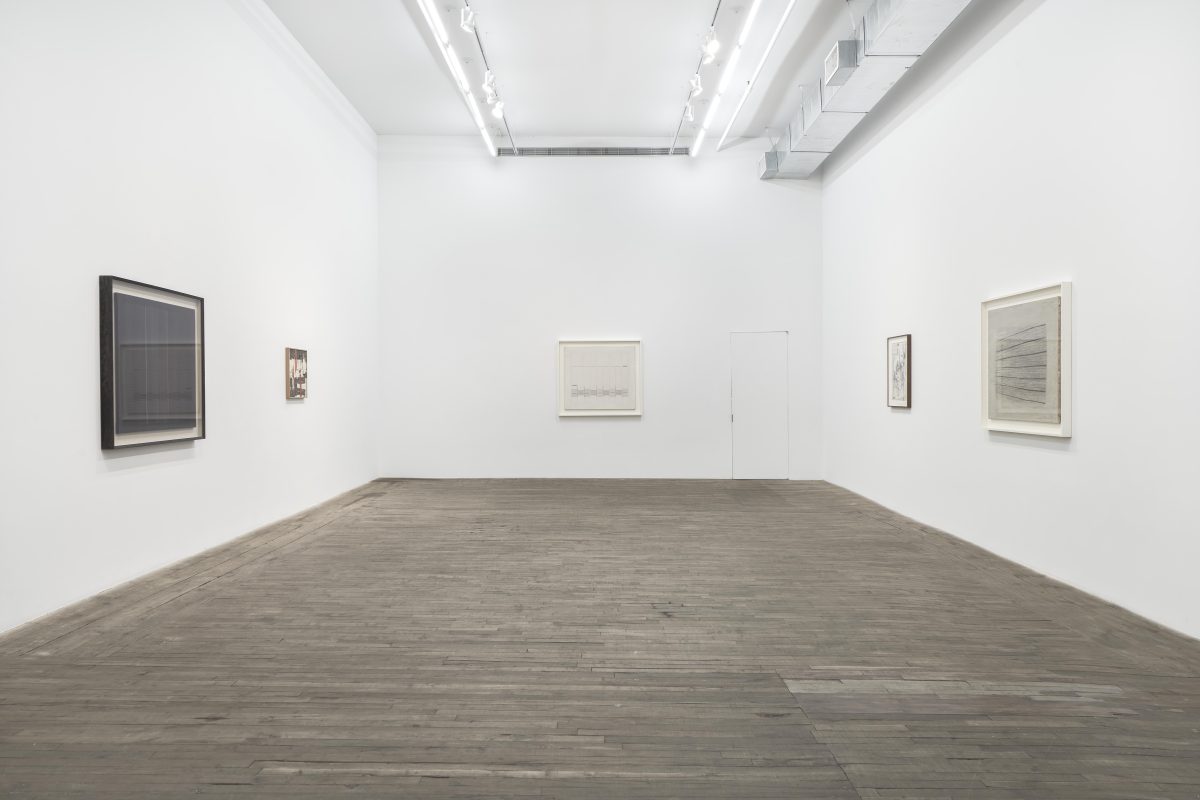
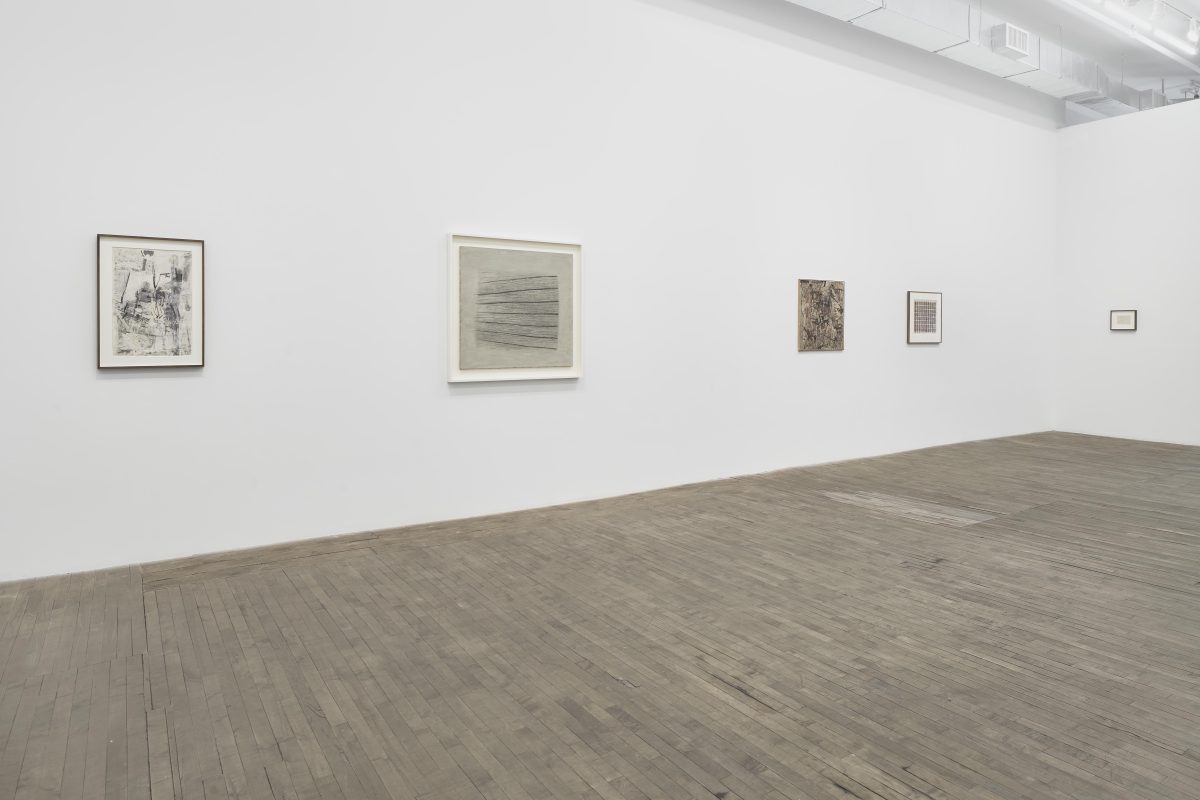
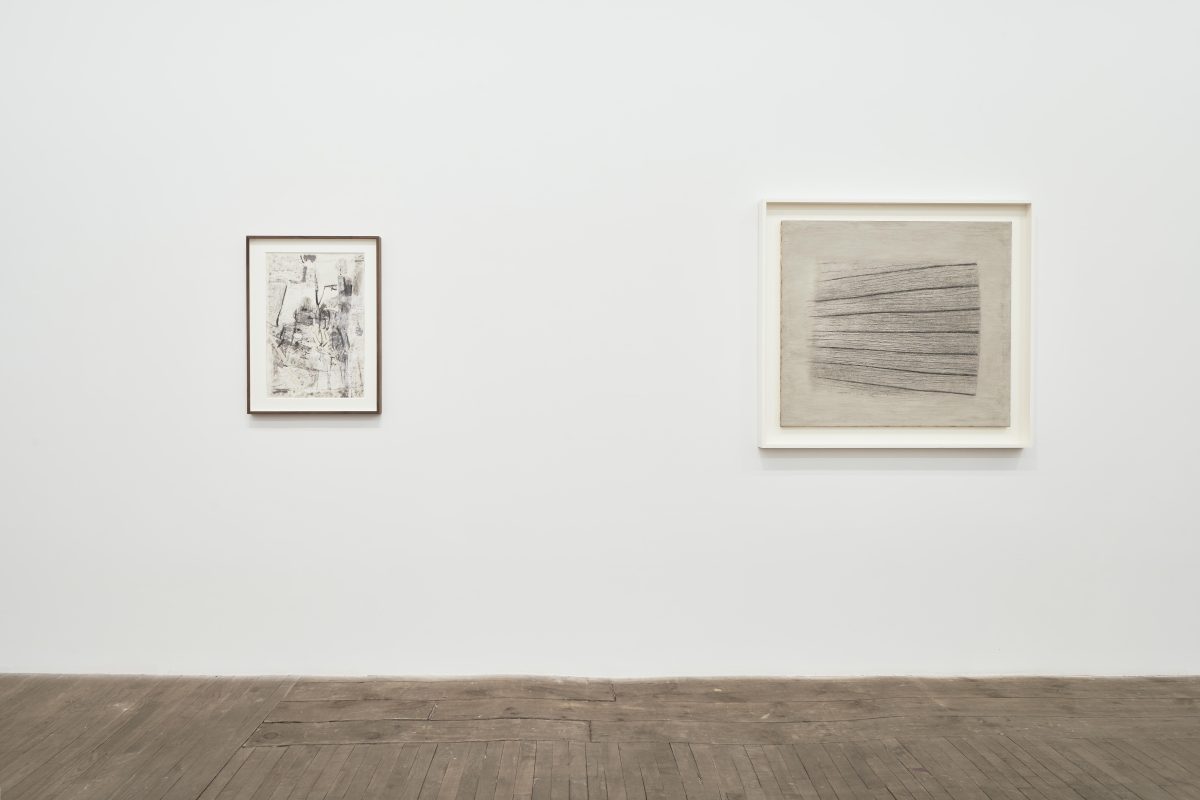


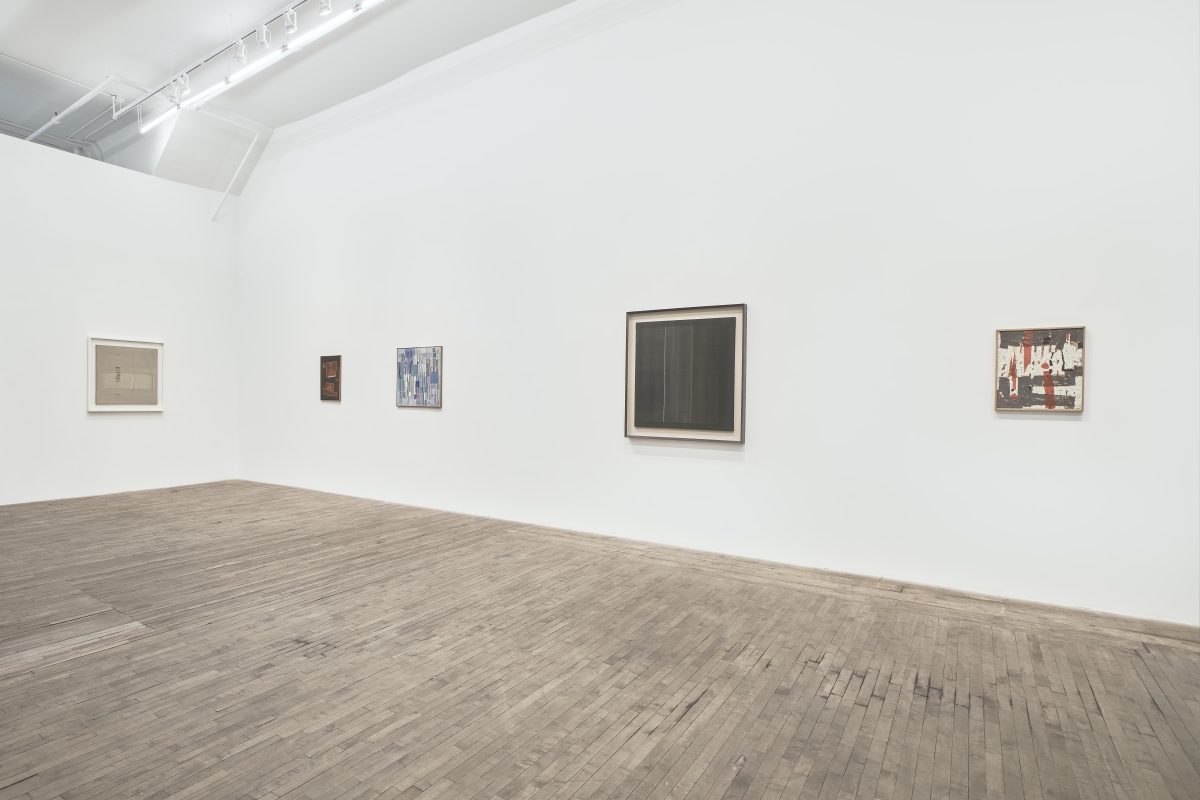
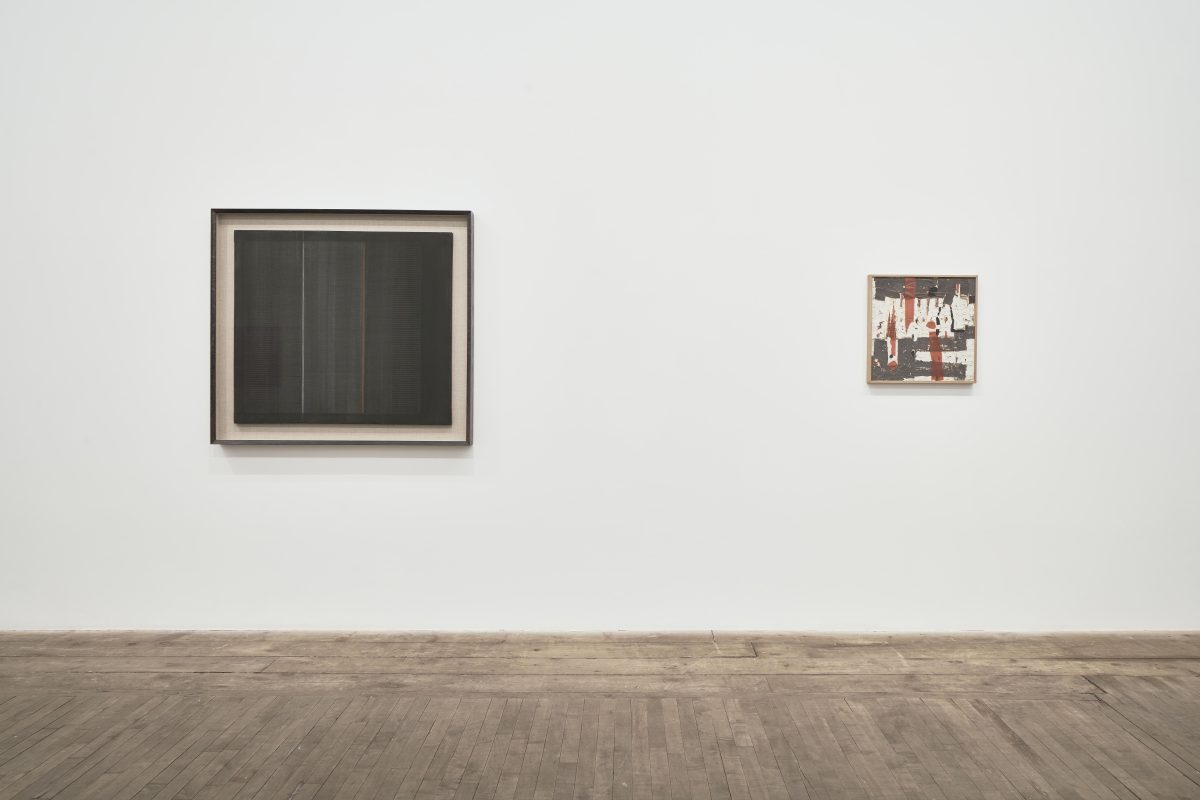

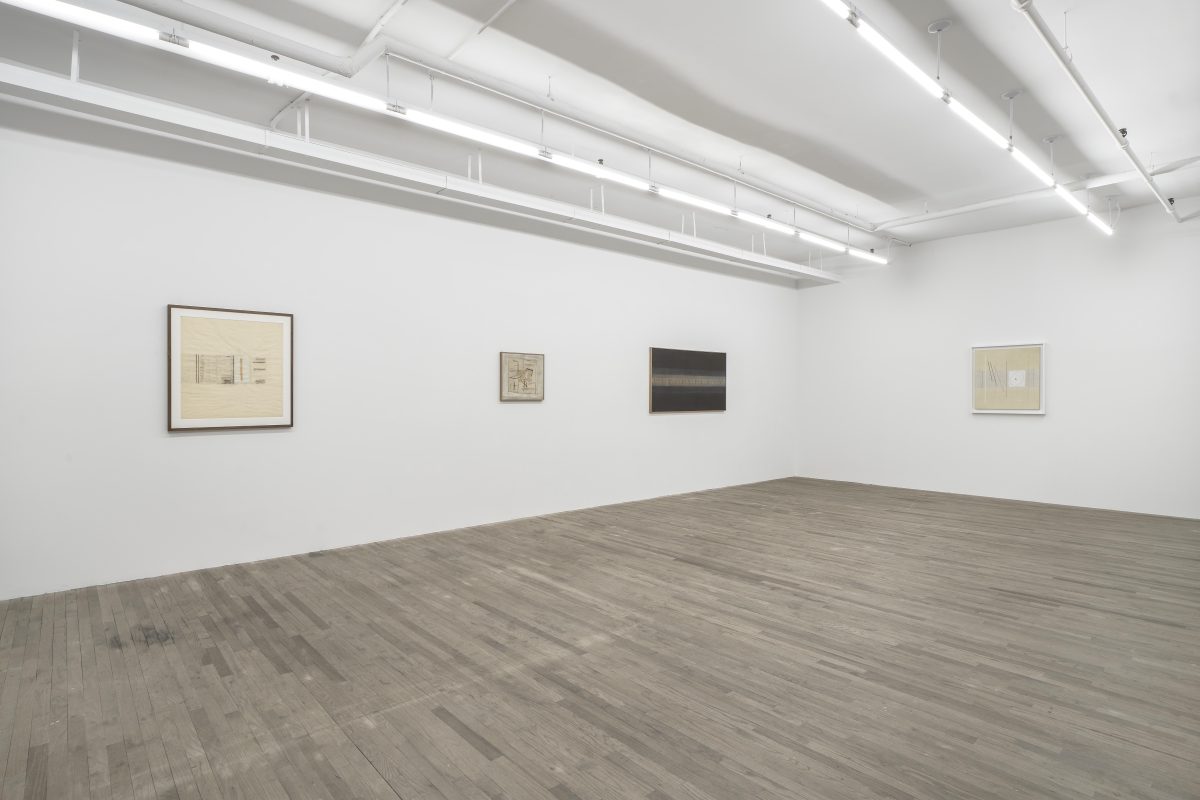
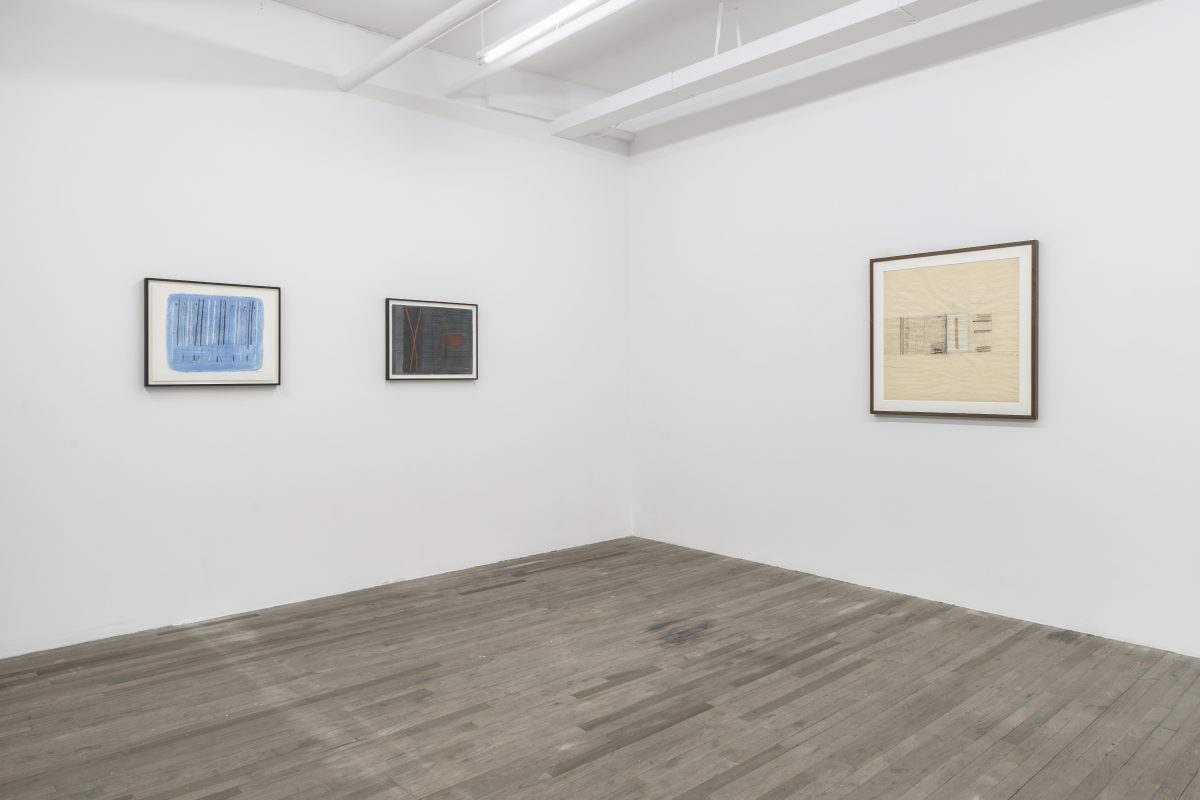
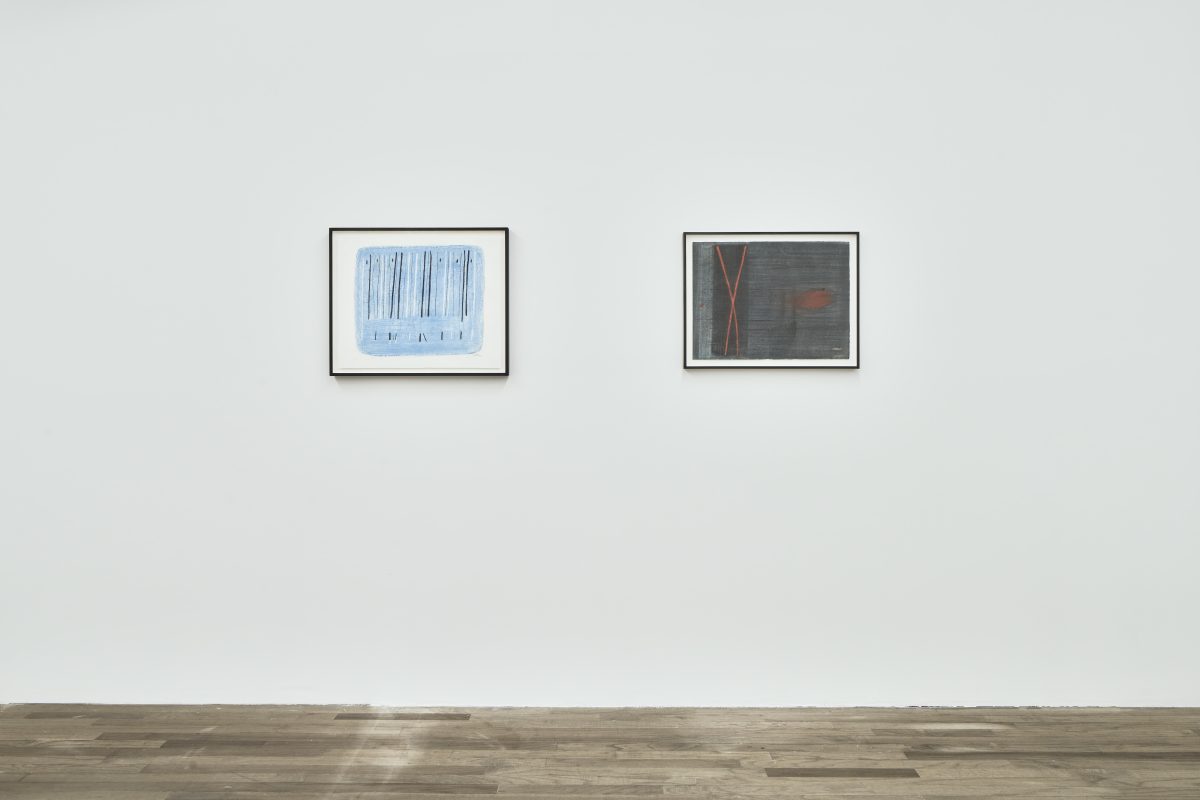
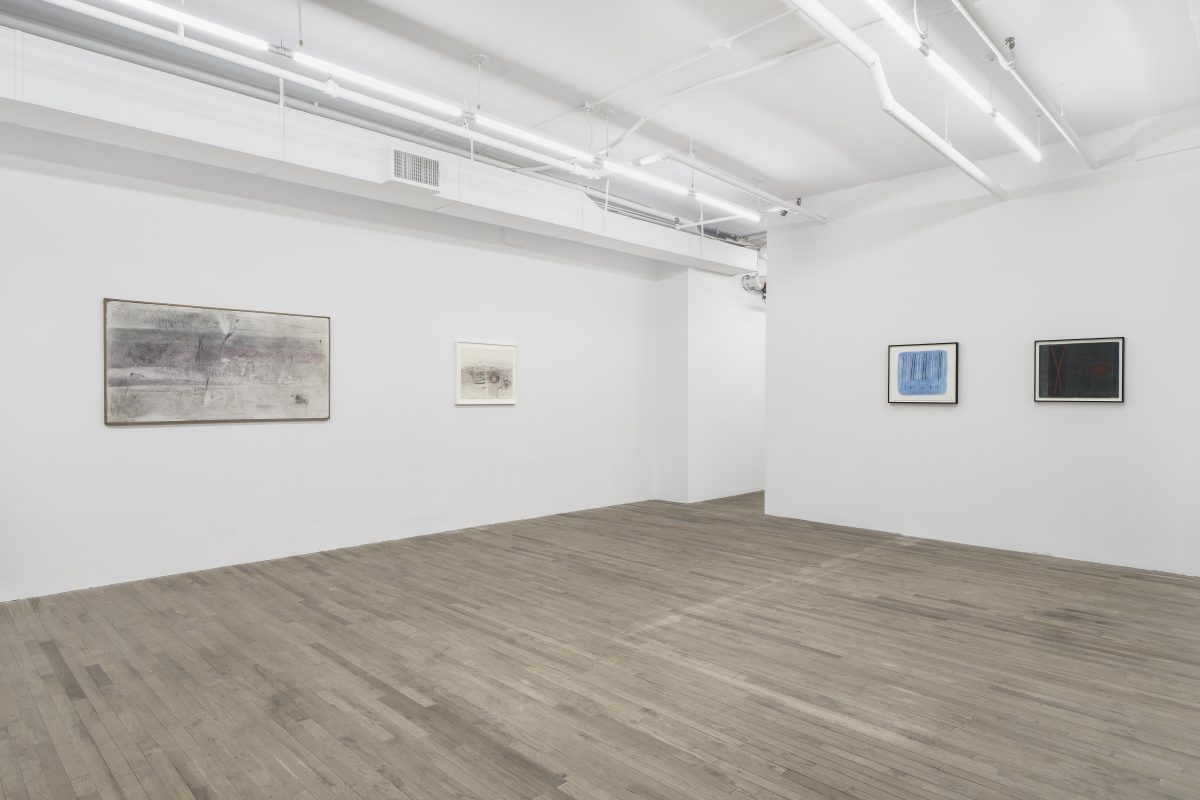
![Bice Lazzari,<i> Striscia rossa obliqua [Oblique red line], 1978 </br> acrylic on canvas </br> 90,2 x 99,1 x 6,4 cm / 35.5 x 39 x 2.5 in (framed)</i>](https://kaufmannrepetto.com/site/web/app/uploads/2023/04/bice_lazzari-the_marks_and_the_measures-kaufmann_repetto-2023bice_lazzari-the_marks_and_the_measures-kaufmann_repetto-2023bice_lazzari-the_marks_and_the_sign-kaufmann_repetto-2023BLAZ-028-1200x800.jpg)
![Bice Lazzari,<i> Sequenza del segno [Sequence of sign]</i>, 1973 </br> acrylic on canvas </br> 90,2 x 99,1 x 6,4 cm / 35.5 x 39 x 2.5 in (framed)](https://kaufmannrepetto.com/site/web/app/uploads/2023/04/bice_lazzari-the_marks_and_the_measures-kaufmann_repetto-2023BLAZ-017-1200x800.jpg)
![Bice Lazzari,<i> Quadro in Rosso [Picture in Red] </i>, 1953 </br> oil on canvas </br> 56,5 x 46,5 x 2 cm / 22.2 x 18.2 x 0.7 in (framed)](https://kaufmannrepetto.com/site/web/app/uploads/2023/04/bice_lazzari-the_marks_and_the_measures-kaufmann_repetto-2023bice_lazzari-the_marks_and_the_measures-kaufmann_repetto-2023bice_lazzari-the_marks_and_the_sign-kaufmann_repetto-2023BLAZ-005-683x1024.jpg)
![Bice Lazzari,<i> Senza Titolo [Untitled]
</i>, 1954 </br> oil on canvas </br> 66 x 81,9 x 2,5 cm / 26 x 32.2 x 1 in (framed)](https://kaufmannrepetto.com/site/web/app/uploads/2023/04/bice_lazzari-the_marks_and_the_measures-kaufmann_repetto-2023bice_lazzari-the_marks_and_the_measures-kaufmann_repetto-2023bice_lazzari-the_marks_and_the_sign-kaufmann_repetto-2023BLAZ-012-1200x800.jpg)
![Bice Lazzari,<i> Senza Titolo [Untitled]
</i>, 1967 </br> tempera on canvas </br> 108 x 118,7 x 7,6 cm / 42.5 x 46.8 x 3 in (framed)](https://kaufmannrepetto.com/site/web/app/uploads/2023/04/bice_lazzari-the_marks_and_the_measures-kaufmann_repetto-2023bice_lazzari-the_marks_and_the_measures-kaufmann_repetto-2023bice_lazzari-the_marks_and_the_sign-kaufmann_repetto-2023BLAZ-020-1200x800.jpg)
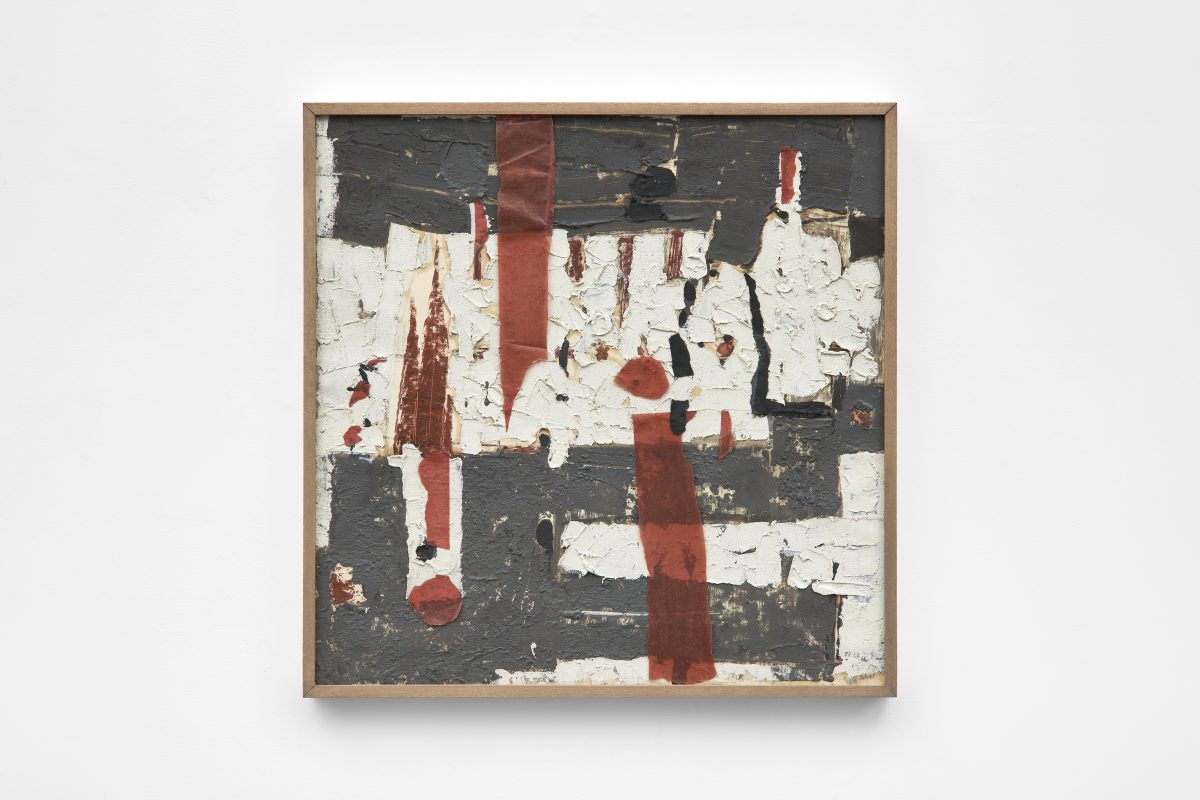
![Bice Lazzari,<i> Acrilico n.6 [Acrylic no. 6] </i>, 1975 </br> acrylic on canvas </br> 107,3 x 118 x 6,3 cm / 42.2 x 46.5 x 2.5 in (framed)](https://kaufmannrepetto.com/site/web/app/uploads/2023/04/bice_lazzari-the_marks_and_the_measures-kaufmann_repetto-2023bice_lazzari-the_marks_and_the_measures-kaufmann_repetto-2023bice_lazzari-the_marks_and_the_sign-kaufmann_repetto-2023BLAZ-018-1200x800.jpg)
![Bice Lazzari,<i> Senza Titolo [Untitled] </i>, 1975 </br> tempera and collage on paper </br> 76,2 x 56,5 x 4,5 cm / 30 x 22.2 x 1.7 in (framed)](https://kaufmannrepetto.com/site/web/app/uploads/2023/04/bice_lazzari-the_marks_and_the_measures-kaufmann_repetto-2023bice_lazzari-the_marks_and_the_measures-kaufmann_repetto-2023bice_lazzari-the_marks_and_the_sign-kaufmann_repetto-2023BLAZ-016-683x1024.jpg)
![Bice Lazzari,<i> Sequenza 3 [Sequence 3] </i>, 1964 </br> tempera, glue and sand on canvas </br> 107,3 x 118,1 x 6,3 cm / 42.3 x 46.5 x 2.5 in (framed)](https://kaufmannrepetto.com/site/web/app/uploads/2023/04/bice_lazzari-the_marks_and_the_measures-kaufmann_repetto-2023bice_lazzari-the_marks_and_the_measures-kaufmann_repetto-2023bice_lazzari-the_marks_and_the_sign-kaufmann_repetto-2023BLAZ-019-1200x800.jpg)
![Bice Lazzari,<i> Scrittura notturna [Night writing] </i>, 1958 </br> oil on canvas </br> 71 x 71 x 2 cm / 28 x 28 x 0.7 in (framed)](https://kaufmannrepetto.com/site/web/app/uploads/2023/04/bice_lazzari-the_marks_and_the_measures-kaufmann_repetto-2023bice_lazzari-the_marks_and_the_measures-kaufmann_repetto-2023bice_lazzari-the_marks_and_the_sign-kaufmann_repetto-2023BLAZ-002-1200x800.jpg)
![Bice Lazzari,<i> Senza Titolo [Untitled] </i>, 1949 </br>tempera on paper </br> 58,4 x 65,4 x 3,2 cm / 23 x 25.8 x 1.3 in (framed)](https://kaufmannrepetto.com/site/web/app/uploads/2023/04/bice_lazzari-the_marks_and_the_measures-kaufmann_repetto-2023bice_lazzari-the_marks_and_the_measures-kaufmann_repetto-2023bice_lazzari-the_marks_and_the_sign-kaufmann_repetto-2023BLAZ-027-1200x800.jpg)
![Bice Lazzari,<i> Senza Titolo [Untitled] </i>, 1939 </br>graphite on paper </br>25,4 x 31,8 x 4,4 cm / 10 x 12.5 x 1.7 in (framed)](https://kaufmannrepetto.com/site/web/app/uploads/2023/04/bice_lazzari-the_marks_and_the_measures-kaufmann_repetto-2023bice_lazzari-the_marks_and_the_measures-kaufmann_repetto-2023bice_lazzari-the_marks_and_the_sign-kaufmann_repetto-2023BLAZ-015-1200x800.jpg)
![Bice Lazzari,<i> Composizione [Composition] </i>, 1968 </br>ink, acrylic and graphite on paper </br>48,3 x 66,7 x 3,2 cm / 19 x 26.3 x 1.3 in (framed)](https://kaufmannrepetto.com/site/web/app/uploads/2023/04/bice_lazzari-the_marks_and_the_measures-kaufmann_repetto-2023bice_lazzari-the_marks_and_the_measures-kaufmann_repetto-2023bice_lazzari-the_marks_and_the_sign-kaufmann_repetto-2023BLAZ-025-1200x800.jpg)
![Bice Lazzari,<i> Il cerchio rosso [The red circle] </i>, 1963 </br>tempera on paper </br>59,7 x 78,1 x 3,8 cm / 23.5 x 30.8 x 1.5 in (framed)](https://kaufmannrepetto.com/site/web/app/uploads/2023/04/bice_lazzari-the_marks_and_the_measures-kaufmann_repetto-2023bice_lazzari-the_marks_and_the_measures-kaufmann_repetto-2023bice_lazzari-the_marks_and_the_sign-kaufmann_repetto-2023BLAZ-023-1200x800.jpg)
![Bice Lazzari,<i> Testimonianza [Testimony] </i>, 1961 </br>glue and sand on canvas </br>82,5 x 163,2 x 3,8 cm / 32.5 x 64.2 x 1.5 in (framed)](https://kaufmannrepetto.com/site/web/app/uploads/2023/04/bice_lazzari-the_marks_and_the_measures-kaufmann_repetto-2023bice_lazzari-the_marks_and_the_measures-kaufmann_repetto-2023bice_lazzari-the_marks_and_the_sign-kaufmann_repetto-2023BLAZ-009-1200x800.jpg)
![Bice Lazzari,<i> La Favole Verde [The Green Tale] </i>, 1958 </br>oil on canvas </br>56,5 x 71 x 2 cm / 22.2 x 28 x 0.7 in (framed)](https://kaufmannrepetto.com/site/web/app/uploads/2023/04/bice_lazzari-the_marks_and_the_measures-kaufmann_repetto-2023bice_lazzari-the_marks_and_the_measures-kaufmann_repetto-2023bice_lazzari-the_marks_and_the_sign-kaufmann_repetto-2023BLAZ-011-1200x800.jpg)
![Bice Lazzari,<i> Quadrato bianco no. 8 [White square n. 8] </i>, 1975 </br>acrylic on canvas </br>86,5 x 86,5 x 5 cm / 34 x 34 x 2 in (framed)](https://kaufmannrepetto.com/site/web/app/uploads/2023/04/bice_lazzari-the_marks_and_the_measures-kaufmann_repetto-2023bice_lazzari-the_marks_and_the_measures-kaufmann_repetto-2023bice_lazzari-the_marks_and_the_sign-kaufmann_repetto-2023BLAZ-001-1200x800.jpg)
![Bice Lazzari,<i> Senza Titolo [Untitled] (Q/435) </i>, 1972-3 </br>acrylic on canvas
</br>82 x 163,2 x 3,8 cm / 32.2 x 64.2 x 1.5 in (framed)](https://kaufmannrepetto.com/site/web/app/uploads/2023/04/bice_lazzari-the_marks_and_the_measures-kaufmann_repetto-2023bice_lazzari-the_marks_and_the_measures-kaufmann_repetto-2023bice_lazzari-the_marks_and_the_sign-kaufmann_repetto-2023BLAZ-003-1200x800.jpg)
![Bice Lazzari,<i> Senza Titolo [Untitled] </i>, 1958 </br>mixed media on masonite </br>19,5 x 28 x 0,7 cm / 7.6 x 11 x 1.2 in (framed)](https://kaufmannrepetto.com/site/web/app/uploads/2023/04/bice_lazzari-the_marks_and_the_measures-kaufmann_repetto-2023bice_lazzari-the_marks_and_the_measures-kaufmann_repetto-2023bice_lazzari-the_marks_and_the_sign-kaufmann_repetto-2023BLAZ-014-1200x800.jpg)
![Bice Lazzari,<i> Senza Titolo [Untitled] </i>, 1977 </br>mixed media on paper </br>90,2 x 90,2 x 3,8 cm / 35.5 x 35.5 x 1.5 inn (framed)](https://kaufmannrepetto.com/site/web/app/uploads/2023/04/bice_lazzari-the_marks_and_the_measures-kaufmann_repetto-2023bice_lazzari-the_marks_and_the_measures-kaufmann_repetto-2023bice_lazzari-the_marks_and_the_sign-kaufmann_repetto-2023BLAZ-010-1200x800.jpg)
![Bice Lazzari,<i> Senza Titolo [Untitled] </i>, 1977 </br>mixed media on paper </br>54 x 64,8 x 3,8 cm / 21.3 x 25.5 x 1.5 in (framed)](https://kaufmannrepetto.com/site/web/app/uploads/2023/04/bice_lazzari-the_marks_and_the_measures-kaufmann_repetto-2023bice_lazzari-the_marks_and_the_measures-kaufmann_repetto-2023bice_lazzari-the_marks_and_the_sign-kaufmann_repetto-2023BLAZ-024-1200x800.jpg)
![Bice Lazzari,<i> Senza Titolo [Untitled] </i>, 1965 </br>tempera on paper </br>49,5 x 63,5 x 3,2 cm / 19.5 x 25 x 1.3 in (framed)](https://kaufmannrepetto.com/site/web/app/uploads/2023/04/bice_lazzari-the_marks_and_the_measures-kaufmann_repetto-2023bice_lazzari-the_marks_and_the_measures-kaufmann_repetto-2023bice_lazzari-the_marks_and_the_sign-kaufmann_repetto-2023BLAZ-026-1200x800.jpg)
![Bice Lazzari,<i> Senza Titolo [Untitled] </i>, 1961 </br>mixed media on paper </br>63 x 83,8 x 3,8 cm / 24.8 x 33 x 1.5 in (framed)](https://kaufmannrepetto.com/site/web/app/uploads/2023/04/bice_lazzari-the_marks_and_the_measures-kaufmann_repetto-2023bice_lazzari-the_marks_and_the_measures-kaufmann_repetto-2023bice_lazzari-the_marks_and_the_sign-kaufmann_repetto-2023BLAZ-029-1200x800.jpg)
